A well-executed bathroom remodel can transform one of your home’s most essential spaces while adding significant value to your property. Whether you’re dreaming of a spa-like retreat with a walk in shower or simply need to update outdated fixtures, learning how to remodel the bathroom properly ensures your project stays on budget and timeline. A bathroom remodel can enhance your home’s appeal and functionality.
Your bathroom remodel process involves multiple phases, from initial planning through finishing touches, each requiring careful consideration of costs, materials, and logistics. Even with a budget-friendly or DIY approach, you can achieve amazing results that make your space look high-end without a high price tag. With DIY projects ranging from $2,000-$5,000 and contractor-led renovations typically costing $8,000-$15,000, understanding the complete scope helps homeowners make informed decisions about their investment.
Understanding the intricacies of a bathroom remodel is vital for a successful outcome. Every homeowner should consider how a bathroom remodel affects their daily living and the overall market value of their home, making the process even more important.
This comprehensive guide walks you through every aspect of bathroom remodel planning and execution, starting with the importance of having a clear idea or vision for your project. A successful bathroom remodel not only meets your design needs but also addresses practical aspects that ensure efficiency.
When embarking on a bathroom remodel, consider the balance between aesthetics and functionality. Each decision impacts the overall success of your bathroom remodel.
With thoughtful planning, a bathroom remodel can achieve stunning results and enhance your home’s value. A well-planned bathroom remodel has the potential to be one of the best investments you can make.
This comprehensive guide walks you through every aspect of bathroom remodel planning and execution, starting with the importance of having a clear idea or vision for your project. It will help you create a functional layout that meets your needs while avoiding costly mistakes that can derail your project.
When setting a budget for your bathroom remodel, it’s crucial to remember that the choices you make will significantly influence the overall cost. A well-thought-out bathroom remodel can save money in the long run.
Planning Your Bathroom Remodel
The foundation of any successful bathroom remodel starts with thorough planning that addresses budget, timeline, and scope decisions upfront. Begin by gathering ideas and inspiration to inform your planning decisions, considering both practical updates and creative design concepts. As you plan, it’s important to search for the right materials, fixtures, or professionals to ensure your project meets your needs and style preferences. This phase determines whether your project will proceed smoothly or encounter expensive surprises that force mid-project changes.
Deciding to keep the existing layout can save time and costs in your bathroom remodel. Retaining the current plumbing and electrical systems often leads to a smoother bathroom remodel experience.
Relocating fixtures during a bathroom remodel can significantly alter the overall shape of your bathroom, affecting both layout and space utilization. Careful planning in the initial stages of a bathroom remodel can help avoid costly changes later.
Research your local requirements for a bathroom remodel early to avoid complications later. Ensuring all permits are in place can save time and money during the bathroom remodel process.
Determine your bathroom remodel budget range
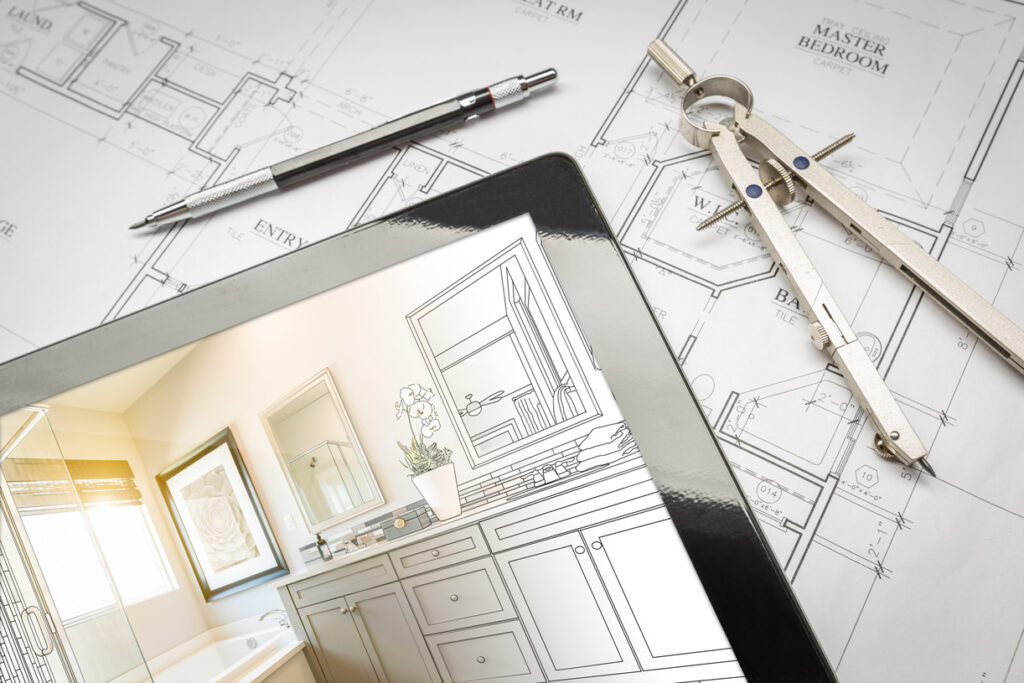
Setting a realistic budget requires understanding the true costs involved in bathroom remodeling. DIY projects can cost $2,000-$5,000 when you handle most of the work yourself, but professional contractor-led remodels for a standard 5×10 bathroom typically range from $8,000-$15,000. Luxury renovations or projects in high-cost areas can push total expenses as high as $40,000 depending on material choices and scope.
Labor accounts for 40-60% of total project costs in a bathroom remodel, making it the largest expense category. Materials like tile floor options, new fixtures, and cabinetry represent the next significant cost driver. The key is building in a 10-20% contingency for unexpected issues like hidden water damage or mold that commonly emerge during a bathroom remodel.
During your bathroom remodel, you’ll need to establish alternative bathing arrangements. This step is crucial for maintaining convenience while your bathroom remodel is underway.
Planning for material lead times is essential in a bathroom remodel. Delays can disrupt your timeline, so being prepared can help keep your remodel on track.
Creating realistic timeline expectations for your bathroom remodel ensures a smoother process. Understanding each phase of the bathroom remodel will help manage your expectations.
During your bathroom remodel, account for potential delays caused by material deliveries. Building flexibility into your timeline helps manage stress during the renovation.
Assess whether to keep your existing bathroom remodel layout
Developing a clear design vision that incorporates your bathroom remodel goals can lead to stunning results. This vision will guide your choices throughout the remodel.
One of the most impactful early decisions involves whether to maintain your existing floor plan or make structural changes. When considering this, think about the current bath or shower configuration and how it fits your needs. Keeping plumbing and electrical systems in their current locations, including the bath or shower, can dramatically reduce both costs and complexity, often allowing DIY homeowners to complete full renovation projects for under $5,000.
Sketching different layout options before your bathroom remodel begins allows you to visualize how changes will impact the space. This planning step is critical for successful execution.
Moving major fixtures like toilets or relocating a small vanity to accommodate a double vanity requires new water supply lines, drain connections, and often structural modifications. Relocating these lines can significantly alter the overall shape of your bathroom, affecting both layout and space utilization. These changes necessitate professional plumber involvement, permit requirements, and potential access issues that can add weeks to your timeline and thousands to your budget.
Consider permits needed for your area
The decision on keeping or removing bathtubs during your bathroom remodel can greatly affect your layout and functionality. Consider both current and future needs when making this choice.
Most jurisdictions require permits for plumbing modifications, electrical work, and structural changes during bathroom remodeling projects. The permit process typically takes 2-6 months depending on your municipality, project complexity, and current inspection backlogs.
Planning your vanity placement early in the bathroom remodel process is crucial for a successful layout. Ensure the plumbing is well thought out to avoid complications.
Research local requirements early or consult with your general contractor about permit needs. Unpermitted work can create complications during home sales and may require costly rework if discovered during inspections. Permitted projects include scheduled inspections at rough-in and final phases, particularly for plumbing and electrical modifications.
Plan alternative arrangements during renovation
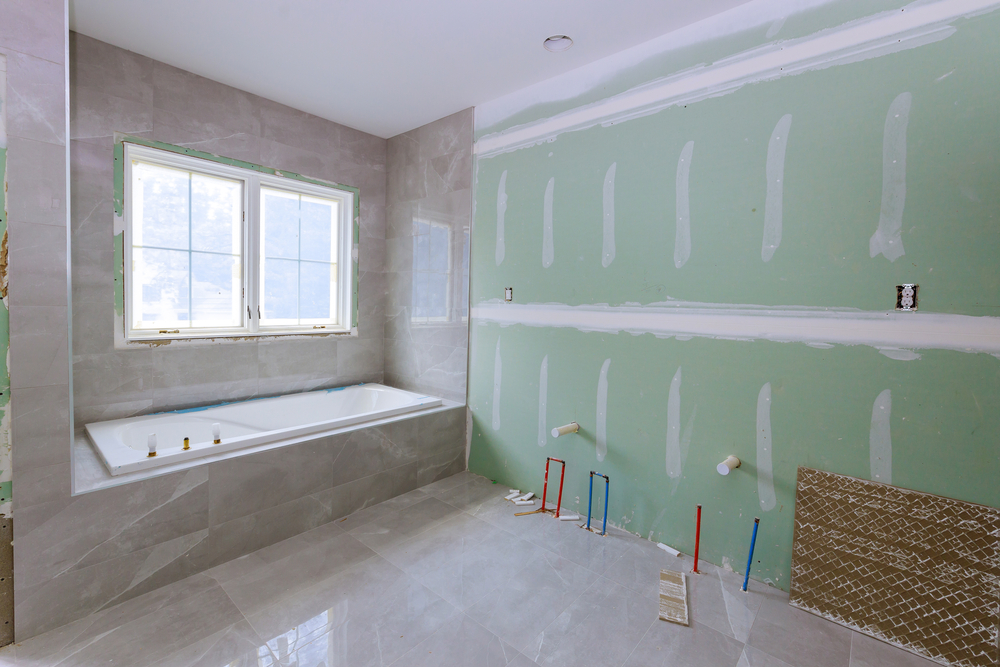
Considering separating the toilet area during your bathroom remodel can greatly improve usability. This design consideration enhances comfort for all users.
For single-bathroom homes, establishing alternative bathing and toileting arrangements becomes essential during your bathroom remodel. Options include temporary fixtures, arrangements with neighbors, or portable solutions depending on your project timeline and access to other facilities. Be prepared to wait for fixtures or materials to arrive, as delays can leave you without key amenities and impact the rest of the house, especially if the renovation disrupts daily routines or clashes with the updated look of other spaces.
Material lead times present another critical planning consideration. Custom elements like glass shower enclosures, bespoke vanity cabinets, and specialty tiles can require 6-12 weeks for delivery in 2025, with supply chain disruptions potentially extending these timelines further.
Create realistic timeline expectations
Maximizing storage with built-ins during your bathroom remodel creates a clean and organized look. Proper planning for storage solutions enhances the overall functionality.
The complete bathroom renovation process from initial consultation through finishing touches typically spans 5-10 weeks for medium-scope projects. This breaks down into 3-4 weeks for design and planning, 2-6 months for permit approval, and several additional weeks for demolition, construction, and final installation work.
Account for potential delays from material deliveries, inspection scheduling, and unexpected discoveries during demolition. Building flexibility into your timeline prevents stress when inevitable complications arise during the renovation process.
Design Vision and Layout Decisions
Hiring licensed professionals for major modifications is essential for a successful bathroom remodel. This ensures safety and compliance with building codes.
Developing a clear design vision bridges the gap between aesthetic preferences and functional requirements. A bathroom can go from just fine to truly exceptional with the right design vision. In 2025, design priorities emphasize spa-like comfort, accessibility features, and sustainable elements while maintaining timeless style that supports long-term home value. Keeping lines neat and organized is important for both aesthetic appeal and functional efficiency. The design process can also be fun and rewarding, especially when you add personal touches that reflect your style.
Sketch your ideal bathroom layout
Space planning and visualization help determine optimal fixture placement and traffic flow before construction begins. Consider incorporating popular elements like walk in shower designs, freestanding bathtubs for luxury appeal, or double vanity configurations that support multiple users.
Sketching different layout options, whether DIY or with professional design assistance, reveals how various configurations impact daily functionality. Pay attention to door swing clearances, adequate space around fixtures, and logical placement that supports morning and evening routines.
Decide on keeping or removing bathtubs
The decision to maintain or remove existing bathtubs depends on household usage patterns, available space, and resale considerations. Tub removal is increasingly popular in smaller bathrooms to create more generous shower areas or accommodate accessibility features.
However, real estate experts recommend retaining at least one bathtub in family homes to maintain broad buyer appeal. If your house has multiple bathrooms, converting one to a walk in shower while preserving a tub elsewhere offers the best of both functionality and market value.
Plan vanity placement early
Vanity location decisions directly impact plumbing installation, electrical work, and overall room flow. Early determination prevents costly rework during construction and ensures adequate wall space for necessary connections.
Installing proper waterproofing membranes during your bathroom remodel prevents future issues. This step is crucial for the longevity of your new features.
Floating vanities create a modern aesthetic while facilitating easier floor cleaning underneath. Double vanity installations require sufficient wall space and plumbing access for two sets of supply lines and drains, making early planning essential for proper infrastructure placement. Popular options like an undermount sink can be incorporated for a seamless look and easy maintenance.
Consider separating toilet area
Scheduling required inspections throughout your bathroom remodel ensures compliance with local regulations. Missing inspections can create complications down the line.
Creating privacy between the toilet and other bathroom functions improves multi-user functionality and adds comfort for shared spaces. This separation can be achieved through half-walls, separate enclosures, or strategic placement away from the main entry and vanity area. As part of the remodel, consider upgrading or replacing the toilet bowl for improved comfort and aesthetics.
Water closet concepts that isolate the toilet from sink and shower areas allow multiple family members to use the bathroom simultaneously, a valuable feature that can enhance both daily convenience and home value.
Choosing materials and finishes for your bathroom remodel that align with your style and needs is crucial. This selection impacts both aesthetics and functionality.
Researching material lead times before starting your bathroom remodel is essential for effective planning. This knowledge helps you avoid unexpected delays in your project.
Maximize storage with built-ins
Contemporary bathroom design emphasizes integrated storage solutions that reduce counter clutter and maintain clean lines. Built-in cabinetry, under-vanity drawers, medicine cabinets with integrated lighting, and recessed shelving make use of wall cavities and awkward spaces.
Custom or semi-custom storage maximizes utility in challenging layouts while supporting the spa-like aesthetic that many homeowners desire. Planning storage locations during the design phase ensures proper framing and electrical preparation for features like illuminated medicine cabinets.
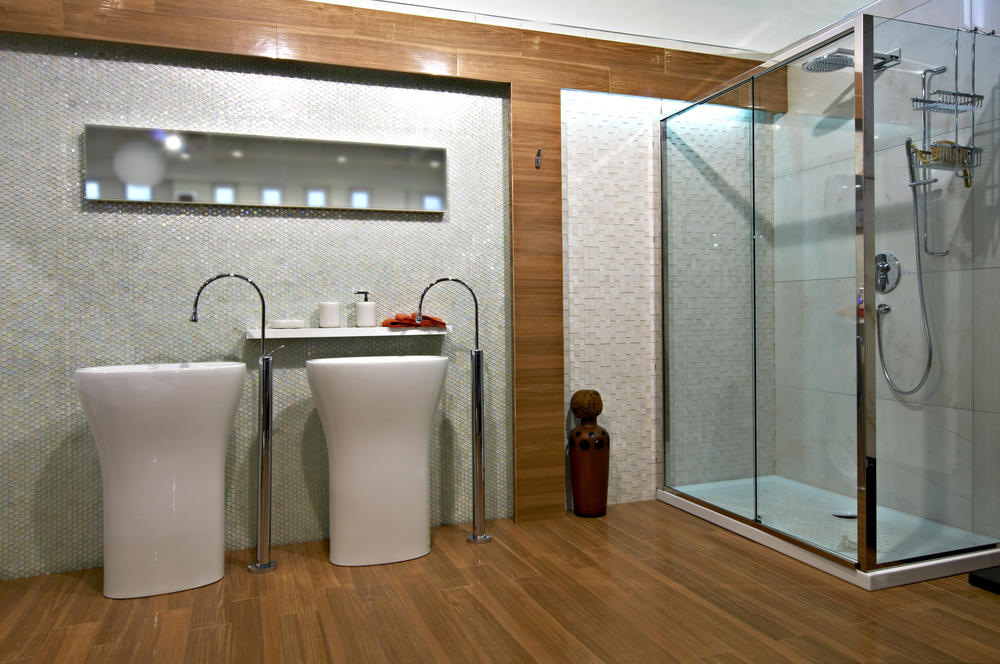
Demolition and Structural Work
The demolition phase most frequently reveals underlying issues like water damage, mold, structural problems, or non-compliant systems that require addressing before new installation can proceed. During demolition, it’s important to check the ceiling for signs of water damage, sagging, or uneven surfaces that may need repair before finishing. Systematic removal minimizes dust infiltration and prevents unnecessary damage to surrounding areas. Through thorough demolition and renovation, a bathroom can be saved from a dated or damaged state, transforming it into a modern and functional space.
Hire licensed professionals for major modifications
All work involving plumbing systems, electrical circuits, and structural changes requires licensed trades for both safety and code compliance reasons. The homeowner should carefully decide which tasks to DIY and which to leave to professionals. DIY homeowners can handle surface-level demolition like removing old fixtures, tiles, and damaged drywall, but experts strongly recommend professional installation for infrastructure changes.
Attempting DIY electrical or plumbing modifications creates safety hazards and potential code violations that can cause problems during inspections or future home sales. When making structural changes, such as installing a soaking tub, it is essential to ensure the floor can support the weight of the tub filled with water and a human. Professional trades also handle permit applications and inspection coordination, reducing compliance risks for homeowners.
Using online tutorials for DIY installation during your bathroom remodel can save costs. Ensure tasks undertaken are appropriate for your skill level.
Remove old fixtures systematically
Begin fixture removal by shutting off water and electrical supplies to prevent damage during demolition. Remove tiles, cabinetry, and surface materials methodically to avoid unnecessary destruction of structural elements that remain in good condition.
Document existing plumbing and electrical locations with photos before removal, as this information proves valuable during reconstruction. Proper disposal of old materials, particularly if lead or asbestos concerns exist in older homes, may require specialized handling procedures.
Update plumbing for new configurations
Relocating fixtures requires re-routing supply lines using modern materials like PEX or copper, along with new drain connections typically using ABS or PVC piping. Major plumbing modifications must be completed and left accessible for inspection before wall and floor finishes are installed.
Modern upgrades often include recirculating pumps for instant hot water delivery, tankless water heaters for space efficiency, and water-efficient fixtures like dual-flush toilets and low-flow faucets that reduce long-term operating costs. Upgrading to a modern faucet and installing new sinks can further enhance both the functionality and appearance of your bathroom during a plumbing update.
Install proper waterproofing membranes
Before any tile installation begins, contemporary best practice requires waterproof membrane application over all wet zones including showers, tub surrounds, and floor areas where water exposure occurs. In addition to membranes, installing splash guards is recommended to protect walls from water splashes, especially around showers and bathtubs. Products like RedGard or Schluter systems create barriers that prevent moisture penetration behind finished surfaces.
Skipping waterproofing represents one of the leading causes of premature tile and grout failure, making this step essential for long-term durability. Proper membrane installation extends to corners, penetrations, and transitions where water infiltration risks are highest.
Schedule required inspections
After rough-in work completion but before closing walls and floors, building inspectors verify proper installation and code compliance for plumbing, electrical, and structural modifications. Missing required inspections can invalidate warranties and create complications during future property transactions.
Coordinate inspection scheduling with your general contractor or handle directly if managing the project yourself. Plan for potential re-inspections if initial reviews identify items requiring correction before approval.
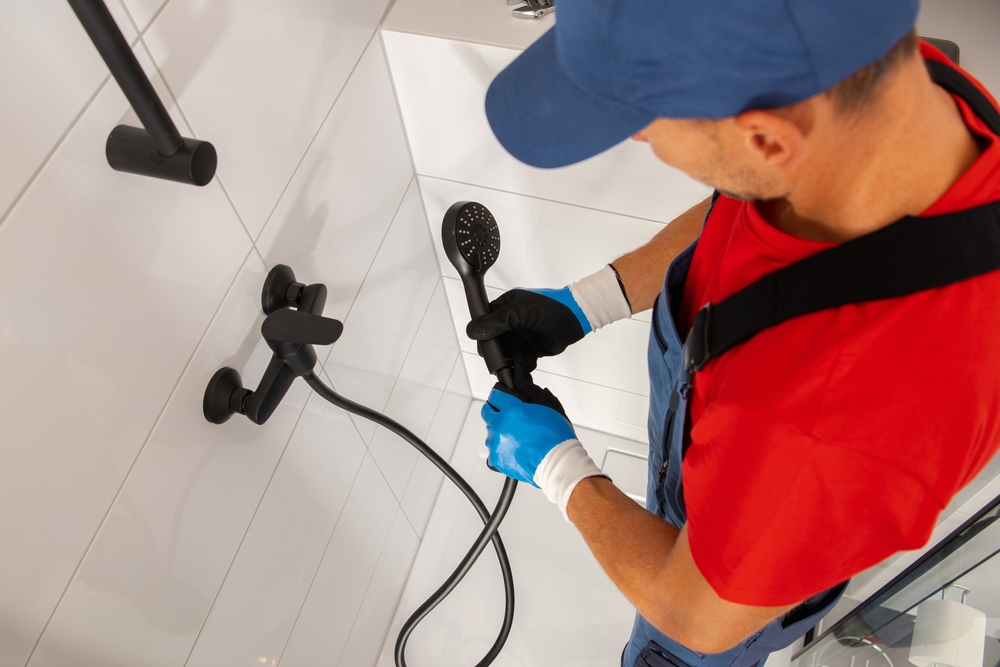
Selecting Materials and Finishes
Material selection establishes both aesthetic character and long-term performance of your bathroom renovation. Current trends in 2025 emphasize cement-look porcelain, classic white subway tiles, large-format stone appearances, and dramatic accent wall treatments that create spa-like atmospheres.
Choose tiles for desired aesthetic
Visit tile showrooms to see materials in person rather than relying solely on online images, as lighting conditions significantly affect appearance. Popular options include cement-look tiles for modern aesthetics, traditional white subway tiles for timeless appeal, and natural stone or stone-look alternatives for luxury finishes.
Consider technical specifications like slip resistance ratings for floor applications, water absorption classifications for wet areas, and tile thickness for proper installation. Coordinate grout colors carefully, as this detail significantly impacts the final appearance and maintenance requirements.
Your tile guy will appreciate when you specify Schluter trim systems or similar edge treatments that create professional transitions and protect exposed tile edges from damage. These details distinguish high-quality installations from basic applications.
Select coordinating fixture finishes
Maintain design cohesion by matching finishes across faucets, showerheads, towel bars, and other hardware elements. Popular choices include brushed nickel for warm tones, matte black for contemporary contrast, or polished chrome for classic brightness.
Mixed metal approaches are trending but require strategic application to avoid visual chaos. Typically limit combinations to one dominant finish with a single accent material per space. Consider long-term availability when selecting unique finishes, as replacement parts may become difficult to source.
Source cost-effective countertops
Quartz and granite remain dominant choices for bathroom countertops due to their water resistance and durability. Investigate remnant options from countertop suppliers, which offer the same materials at 30-60% discounts compared to full slab purchases.
Engineered quartz provides non-porous surfaces that resist staining and require minimal maintenance, making it particularly suitable for bathroom applications. Natural stone options like granite offer unique character but may require periodic sealing to maintain water resistance.
Research material lead times
Custom elements including glass shower enclosures, bespoke cabinetry, and specialty tiles often require 6-12 weeks for production and delivery in 2025. Supply chain disruptions continue affecting availability, making early ordering essential for timeline management.
Specify in-stock alternatives during material selection to avoid project delays. Many suppliers can suggest comparable options with shorter delivery windows that maintain your design vision while keeping installation on schedule.
Flooring and Wall Installation
Proper installation techniques maximize longevity and prevent common failure modes that require expensive repairs. Following industry best practices during this phase ensures your investment delivers lasting performance and visual appeal.
Install waterproof foundation systems
Begin shower floor installation with waterproof PVC pan liner placement under all tile surfaces. Create proper drainage slopes with minimum 1/4 inch fall per foot toward the drain to ensure rapid water runoff and prevent standing water that can cause problems.
Small-format tiles work best for shower floors due to increased slip resistance and ability to conform to required slopes. Larger format tiles are suitable for walls and main floor areas but require flat, well-prepared underlayment for proper installation.
Apply thin-set mortar systematically
Use appropriate thin-set mortar formulations for your specific tile type and application area. Apply adhesive in manageable sections, allowing adequate working time for proper tile placement and adjustment before initial set occurs.
Maintain consistent spacing and alignment throughout the installation process. Professional tile installers emphasize the importance of checking level and plumb regularly to prevent cumulative errors that become visible in the finished installation.
Plan for unexpected issues
Subfloor damage, uneven surfaces, or hidden moisture problems frequently emerge during flooring installation. Budget both time and money for addressing these discoveries, which can require additional materials and labor beyond original estimates.
Document any structural issues with photos and consult professionals for proper remediation approaches. Addressing underlying problems thoroughly prevents future failures and ensures your new flooring performs as expected.
Finishing Touches and Accessories
The final phase transforms your functional bathroom renovation into a polished, cohesive space that reflects your design vision. Attention to detail during finishing touches distinguishes professional-quality results from basic installations.
Complete painting last
Reserve wall painting for the end of your renovation process to avoid touch-ups from subsequent construction activities. Achieving clean, well-painted surfaces is essential for a professional finish and can greatly enhance the overall appearance of your bathroom. Test paint colors with small samples under different lighting conditions, as bathroom lighting significantly affects apparent color appearance.
Use high-quality paint formulated for bathroom humidity conditions. Semi-gloss or satin finishes provide better moisture resistance and cleanability compared to flat paints, making them more suitable for bathroom environments.
Hiring professionals selectively during your bathroom remodel can optimize results. Focus on areas where expertise is crucial for the success of your project.
Install coordinated lighting and mirrors
Select mirrors, light fixtures, and hardware together to ensure design coherence across all elements. Illuminated or backlit mirrors continue trending in 2025, often incorporating integrated medicine cabinets for enhanced functionality.
Transforming your bathroom dreams into reality requires careful planning and execution. A successful bathroom remodel can provide lasting satisfaction and value to your home.
Layer lighting types including task lighting around mirrors, accent lighting for visual interest, and ambient lighting for general illumination. Proper lighting design enhances both functionality and aesthetic appeal of your completed space.
Add functional accessories
Install towel hooks, toilet paper holders, and other accessories with proper wall anchoring for durability. Locate studs or use appropriate anchors rated for expected loads to prevent future failures.
Consider the placement of accessories relative to fixture locations and traffic patterns. Logical positioning enhances daily usability while maintaining the clean lines that characterize contemporary bathroom design.
Incorporate suitable plants
Add visual appeal and air quality benefits with plants selected for bathroom humidity and lighting conditions. Research species that thrive in these environments rather than selecting based solely on appearance.
Both real and high-quality artificial plants can enhance the spa-like atmosphere many homeowners desire. Position plants thoughtfully to complement rather than compete with other design elements.
Cost-Saving Strategies
Strategic approaches to material selection and labor allocation can significantly reduce bathroom renovation costs while maintaining quality results. Understanding where to invest and where to economize helps maximize your budget effectiveness.
Focus on cosmetic updates for budget remodels
Cosmetic improvements including painting, fixture replacement, and surface refinishing provide maximum visual impact for minimal investment. Many homeowners can refresh their bathrooms for under $5,000 using these approaches while retaining existing plumbing and electrical locations.
Surface refinishing techniques for bathtubs, tile reglazing, and cabinet refacing offer alternatives to complete replacement that deliver fresh appearances at fraction of full renovation costs. These approaches work particularly well when existing layouts function properly.
Avoid moving plumbing lines
Keeping plumbing fixtures in existing locations represents the single most effective cost control strategy for bathroom renovations. Moving water supply lines, drain connections, or electrical circuits requires professional trades and often permit requirements that significantly increase project costs.
Design around existing infrastructure whenever possible. Creative layout solutions can often achieve desired functionality improvements without requiring expensive utility relocations that push projects beyond budget constraints.
Purchase materials strategically
Shop sales events, clearance merchandise, and discontinued product lines to reduce material costs. Many retailers offer significant discounts on last-season colors or styles that remain perfectly suitable for bathroom applications.
Investigate remnant materials from local suppliers, particularly for countertops and tile where smaller quantities often meet bathroom requirements. Building relationships with suppliers can provide access to excess inventory at substantial savings.
Use online tutorials for DIY installation
Educational resources enable DIY installation of flooring, fixtures, and cabinetry for homeowners with basic tool skills. Quality online tutorials provide step-by-step guidance for tasks that don’t require professional licensing.
Reserve licensed professional services for code-required work including major electrical modifications, plumbing alterations, and structural changes. This hybrid approach balances cost savings with safety and compliance requirements.
Hire professionals selectively
Professional trades bring expertise for complex installations while handling permit and inspection requirements that reduce compliance risks. Focus professional hiring on work requiring licenses while handling surface-level tasks yourself.
A skilled general contractor can coordinate multiple trades efficiently, potentially reducing overall project timeline and preventing coordination problems between different specialists. Evaluate whether project management services justify their cost based on your available time and experience level.
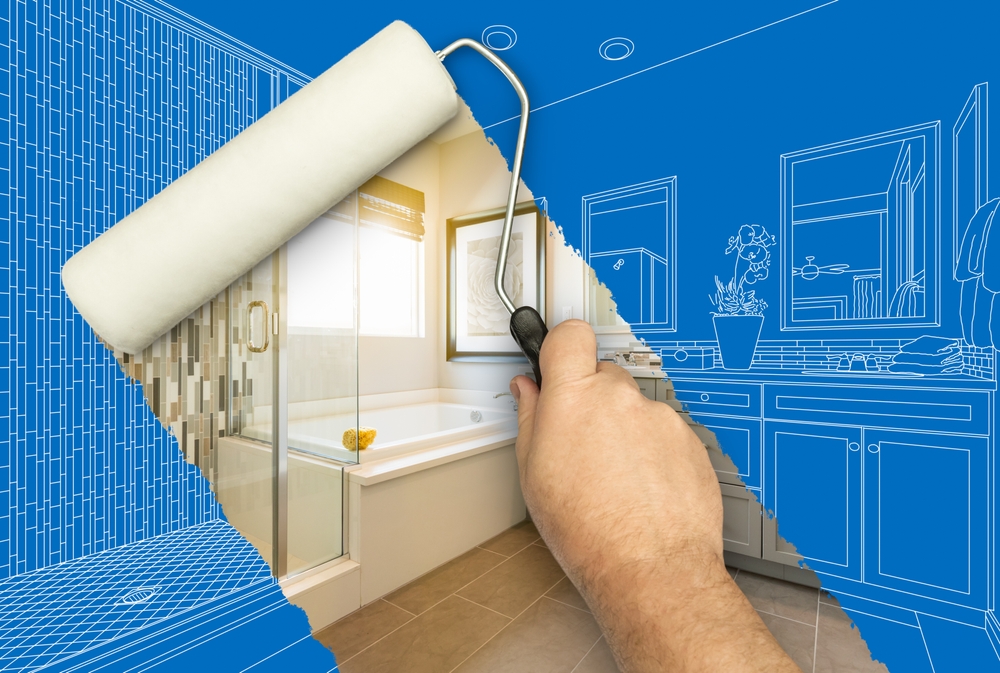
Transform Your Bathroom Dreams Into Reality
Learning how to remodel the bathroom successfully requires balancing design aspirations with practical considerations, especially when planning a bathroom remodel. The most successful projects begin with realistic planning that accounts for unexpected discoveries and material delays while maintaining flexibility for necessary adjustments.
With proper planning, realistic expectations, and attention to quality installation practices, your bathroom remodel can create the beautiful, functional space you’ve envisioned while avoiding the costly mistakes that derail many projects. A bathroom remodel can be a rewarding experience.
With proper planning, realistic expectations, and attention to quality installation practices, your bathroom renovation can create the beautiful, functional space you’ve envisioned while avoiding the costly mistakes that derail many projects.
